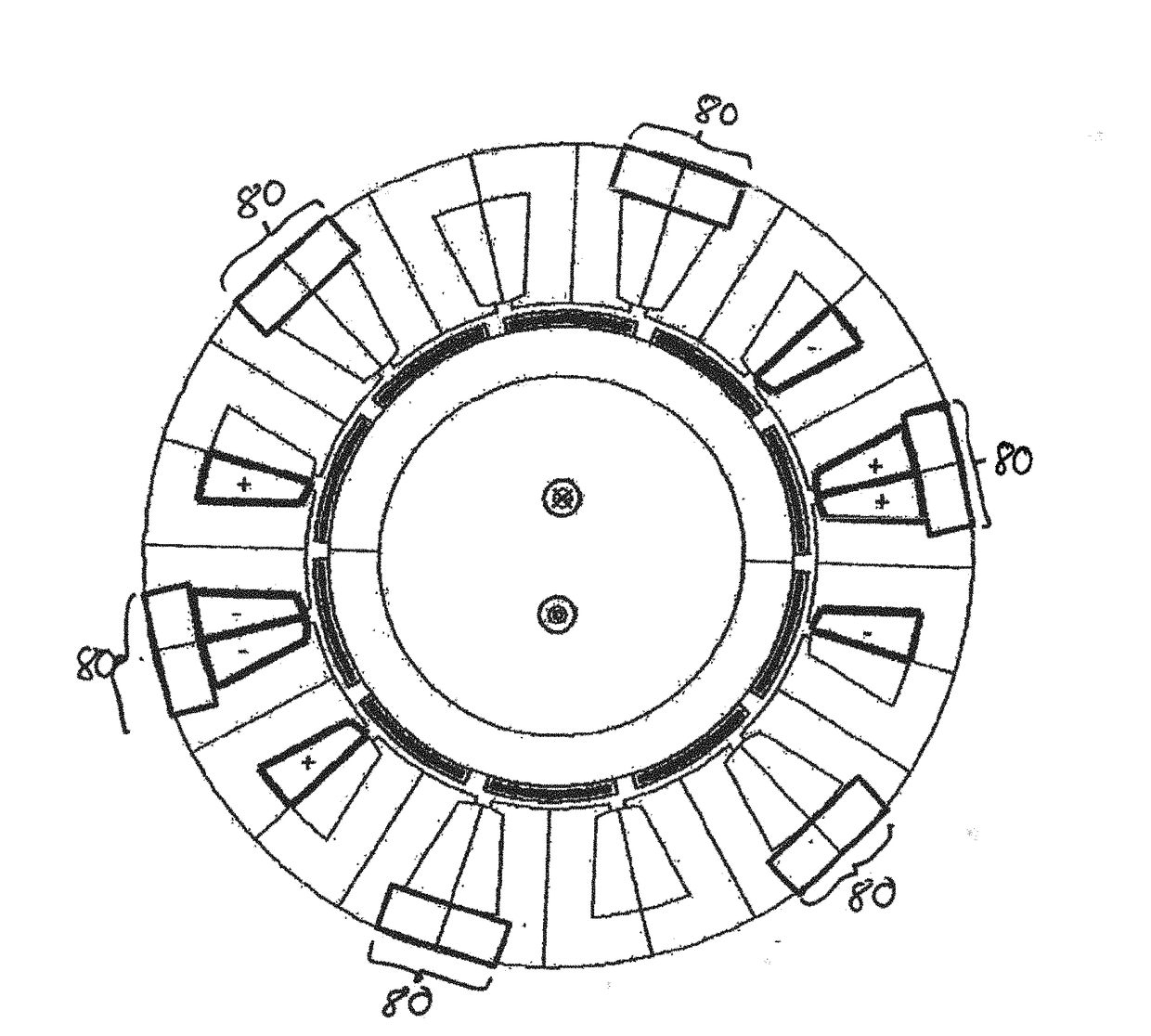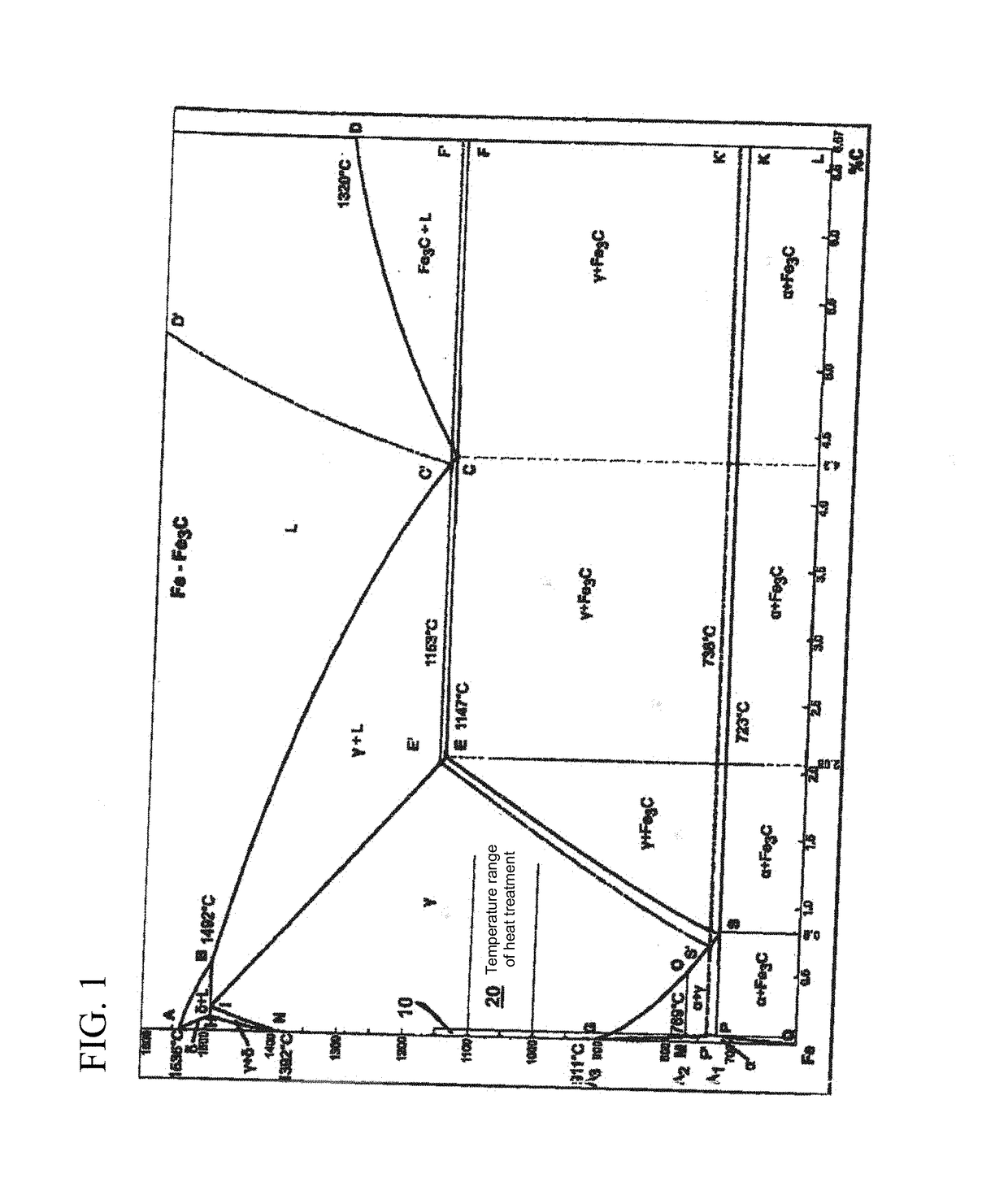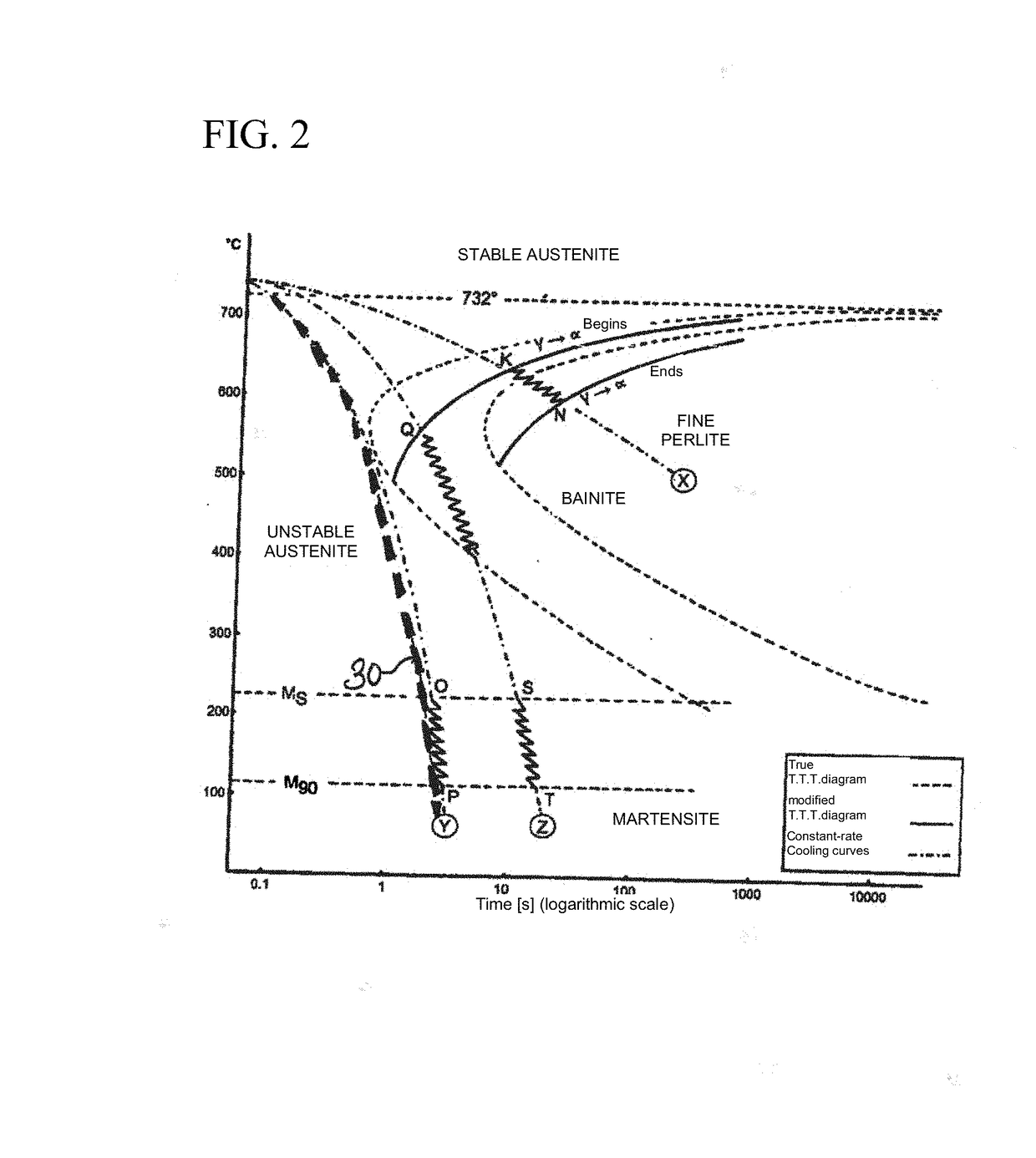Method of manufacturing a rotor and electric machine
a technology of electric machines and rotors, which is applied in the direction of magnetic circuit rotating parts, furnaces, and shape/form/construction of magnetic circuits, can solve the problems of inability to always avoid unwanted occurrence of unwanted stray fluxes, and inability to achieve further improvement. , to achieve the effect of reducing the magnetic permeability in the web region, good magnetic conductivity, and effective disturban
- Summary
- Abstract
- Description
- Claims
- Application Information
AI Technical Summary
Benefits of technology
Problems solved by technology
Method used
Image
Examples
Embodiment Construction
[0041]The torque development of a machine decisively depends on the machine flux and the stray fluxes within the machine. A stray flux path over webs that are required for the mechanical stabilization of the rotor arises in the reluctance synchronous machines and in the permanent magnet synchronous machines due to the rotor configuration. These webs are typically defined by the mechanical load and are unwanted to this degree in the magnetic design of the machine. The aim has previously been to configure the webs in as narrow and thin a manner as possible so that the stray flux path is minimized. Since the rotors are stamped out of an electric sheet, the unwanted webs are also very good magnetic conductors. The web can be narrowed to reduce the scatter flux, which reduces the mechanical capacity, however. In this invention, the reduction of the magnetic permeability is the selected approach to effectively disturb these stray paths.
[0042]This can be achieved by a punctiform thermal tr...
PUM
| Property | Measurement | Unit |
|---|---|---|
| temperature | aaaaa | aaaaa |
| temperature | aaaaa | aaaaa |
| saturation flux density | aaaaa | aaaaa |
Abstract
Description
Claims
Application Information
 Login to View More
Login to View More - R&D
- Intellectual Property
- Life Sciences
- Materials
- Tech Scout
- Unparalleled Data Quality
- Higher Quality Content
- 60% Fewer Hallucinations
Browse by: Latest US Patents, China's latest patents, Technical Efficacy Thesaurus, Application Domain, Technology Topic, Popular Technical Reports.
© 2025 PatSnap. All rights reserved.Legal|Privacy policy|Modern Slavery Act Transparency Statement|Sitemap|About US| Contact US: help@patsnap.com



